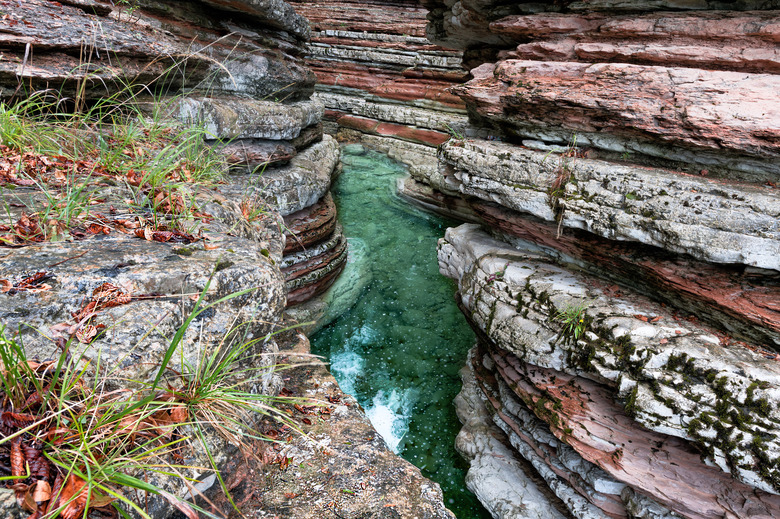The Distribution Of Fossils And Plate Tectonics Theory
According to the theory of plate tectonics, the continents are not rigidly fixed to the surface of the Earth. These huge land masses, referred to as plates, gradually change position relative to each other as they slide over underlying material. In consequence, the map of the Earth's surface is constantly changing over geological timescales. Some of the most persuasive evidence for this theory comes from the distribution of fossils.
The Fossil Record
The Fossil Record
Fossils are the preserved traces of animals or plants found inside rock. They are useful in dating geological material, because they indicate which species were alive at the time the rock was formed. The geographic distribution of fossils is also useful in understanding how different species spread and evolved over time. However, there are some anomalies in this distribution which early geologists had difficulty explaining.
Different Continents, Same Fossils
Different Continents, Same Fossils
The basic problem is that the same fossil species can sometimes be found in widely separated geographic locations. One example is an extinct reptile called Mesosaurus, which flourished 275 million years ago. This fossil is found in two localized areas, in southern Africa and near the southern tip of South America. Today, these areas are separated by almost 5,000 miles of Atlantic Ocean. Although Mesosaurus was a sea-dwelling creature, it inhabited shallow coastal waters and was unlikely to have crossed such a huge expanse of ocean.
Wegener's Theory
Wegener's Theory
Early in the 20th century, a German geologist named Alfred Wegener proposed his theory of continental drift, which was a precursor to the modern theory of plate tectonics. Based on the similarity of fossils in Africa and South America, he proposed that these two continents were once joined together and that the Atlantic Ocean opened up between them after the fossils were formed. This theory also explained the apparent "jigsaw fit" of the two continents, which had been remarked on ever since they were first mapped.
More Fossil Evidence
More Fossil Evidence
As well as linking Africa to South America, the distribution of fossils suggests that other continents were once contiguous with each other. For example the fern-like plant Glossopteris, which flourished almost 300 million years ago, is found in Antarctica, Australia and India as well as Africa and South America. This indicates that Glossopteris lived at a time when all of these continents were joined in a single super-continent, which geologists refer to as Pangaea.
Cite This Article
MLA
May, Andrew. "The Distribution Of Fossils And Plate Tectonics Theory" sciencing.com, https://www.sciencing.com/distribution-fossils-plate-tectonics-theory-21505/. 23 April 2018.
APA
May, Andrew. (2018, April 23). The Distribution Of Fossils And Plate Tectonics Theory. sciencing.com. Retrieved from https://www.sciencing.com/distribution-fossils-plate-tectonics-theory-21505/
Chicago
May, Andrew. The Distribution Of Fossils And Plate Tectonics Theory last modified August 30, 2022. https://www.sciencing.com/distribution-fossils-plate-tectonics-theory-21505/
